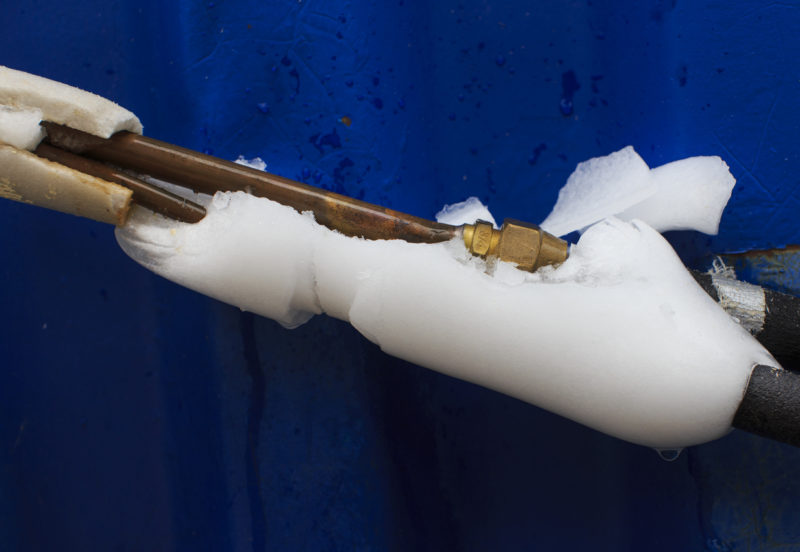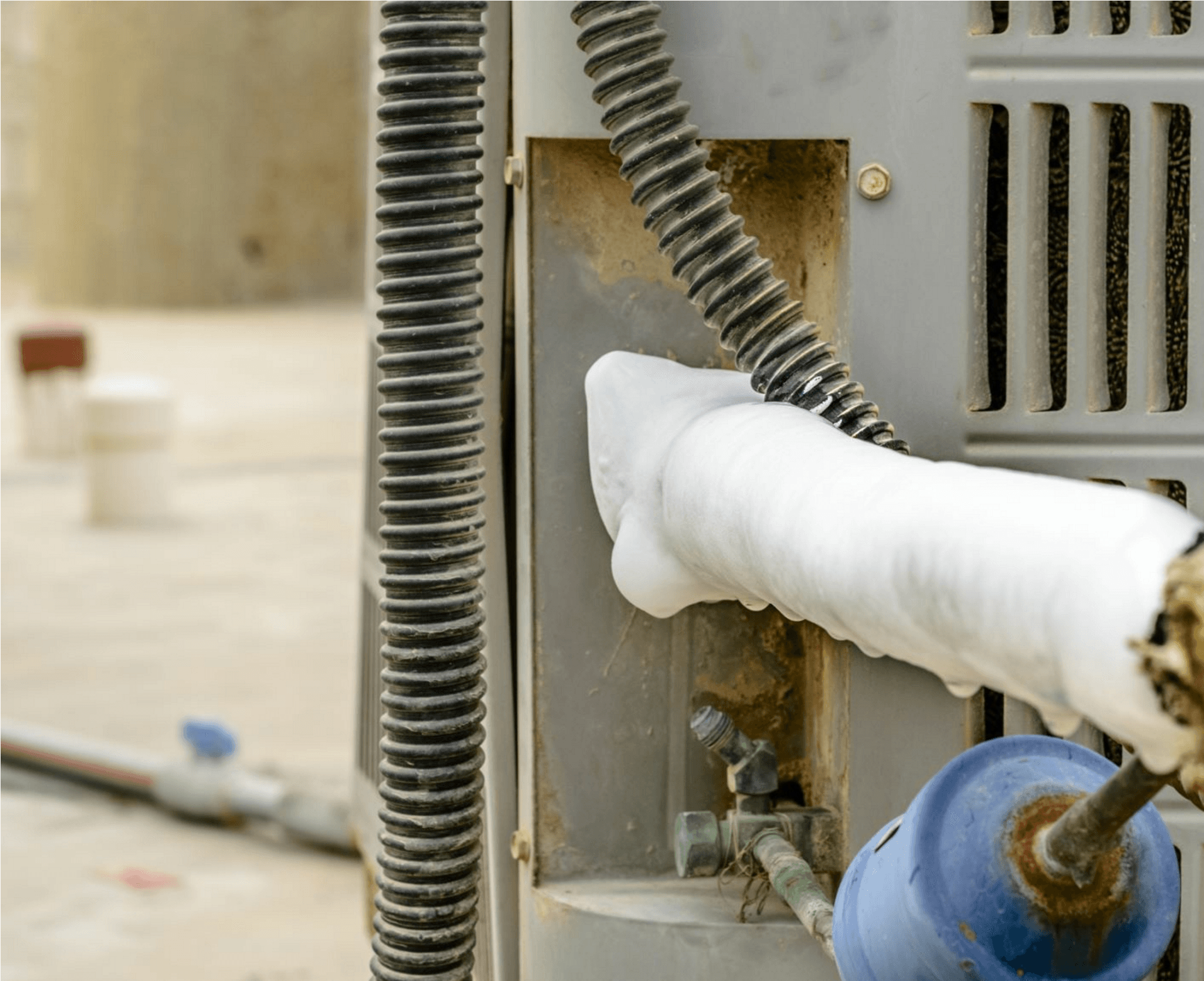Handling a Frozen AC Pipe: Effective Strategies
Handling a Frozen AC Pipe: Effective Strategies
Blog Article
Just how do you really feel in relation to What Causes AC Pipes To Freeze??

Intro
Finding that your AC pipeline is frozen can be concerning, specifically during warm summertime when you depend on your a/c unit the most. Understanding what to do in such a situation is essential to stop further damage to your air conditioning system and guarantee your convenience inside.
Understanding the Causes
Several factors can add to the freezing of an air conditioning pipe. Recognizing these causes can assist you address the concern successfully.
Lack of Airflow
One usual source of a frozen AC pipeline is inadequate airflow. When the airflow over the evaporator coil is restricted, it can trigger the coil to go down below freezing temperature, bring about ice development on the pipe.
Reduced Refrigerant Levels
Inadequate refrigerant degrees in your AC system can likewise cause an icy pipe. Low refrigerant degrees can cause the pressure in the system to go down, leading to the freezing of wetness on the evaporator coil.
Winter Conditions
In colder climates, freezing temperatures outside can contribute to the freezing of a/c pipelines. If your a/c device is not effectively shielded or if there are leaks in the ductwork, chilly air can penetrate the system, causing the pipeline to ice up.
Dirty Air Filters
Unclean or blocked air filters can limit airflow in your a/c system, bring about numerous problems, including a frozen pipeline. It's necessary to replace or clean your air filters routinely to make certain appropriate air movement and protect against ice build-up.
Indications of a Frozen Air Conditioning Pipe
Recognizing the indicators of a frozen air conditioner pipe is essential for punctual action.
Minimized Airflow
If you see a considerable decline in airflow from your vents, it could show an icy pipeline.
Ice Buildup on the Pipe
Visible ice buildup on the refrigerant line or the evaporator coil is a clear indicator of an icy AC pipe.
Strange Sounds from the Unit
Unusual noises, such as hissing or gurgling, originating from your air conditioner unit can signal that there's ice present on the pipeline.
Immediate Actions to Take
When confronted with an icy a/c pipeline, it's important to act quickly to stop more damages to your cooling system.
Switching off the AC
The very first step is to switch off your air conditioning system to prevent the system from running and intensifying the issue.
Checking for Blockages
Check the location around the indoor system for any obstructions that might be blocking air flow, such as furnishings or curtains.
Thawing the Pipe
You can use gentle techniques like putting towels soaked in cozy water around the icy pipe to aid thaw it gradually.
Safety nets
Taking safety nets can help stay clear of future events of an icy air conditioning pipe.
When DIY Methods Fail
If your attempts to thaw the pipe or address other issues are unsuccessful, it's time to contact an expert.
Significance of Hiring a Professional HVAC Technician
A certified HVAC technician has the proficiency and devices needed to identify and fix problems with your AC system securely and efficiently.
Normal Maintenance Checks
Arrange normal maintenance checks with an expert HVAC specialist to make sure that your a/c system is running successfully.
Changing Air Filters
Frequently replace or clean your air filters to prevent airflow constraints and keep optimum performance.
Insulating Exposed Pipes
If your air conditioner pipelines are revealed to cold temperature levels, think about insulating them to prevent freezing throughout winter months.
Seeking Professional Help
If DIY approaches fail to solve the concern or if you're unclear concerning just how to continue, it's finest to seek support from a qualified HVAC technician.
Verdict
Managing a frozen AC pipeline can be an irritating experience, however recognizing exactly how to respond can aid decrease damage and restore convenience to your home. By comprehending the reasons, identifying the signs, and taking prompt action, you can properly resolve the problem and prevent future incidents.
G UP? HOW TO FIX IT?
It happens all over America. And the rest of the world probably. It’s the hottest day ever and for some darn reason your AC isn’t cooling the house. You fiddle with the thermostat to try and fix the problem. Nada. All you can do now is go outside and check the AC unit. You make your way there and find your air conditioner unit is frozen! But how?
In this post we’ll cover how you can tell that your air conditioner has frozen (other than the obvious reasons), what could have caused the freeze, and some of the things you can do about your AC freezing up. And if you have a frozen heat pump condenser, read our blog about it to learn what to do! But remember, it is always best to avoid your AC freezing up with an AC tune up. And if you are moving into a home, it's critical to get HVAC inspection so that you are aware of an AC problems before you move in.
Keep reading and you may be able to fix the frozen AC yourself. If you can’t, call an HVAC specialist. If you live in Maryland, call SuperTech HVAC for AC repair. We’ll take care of it.
How Does An Air Conditioning Unit Work?
How you probably imagine an AC works is wrong. Contrary to popular belief, an AC system does not inject cool air into a building. Instead, it removes the heat from inside and transfers it outside. Cool huh? (Pun intended).There are 4 major components among the 3 stations of an air conditioning system: the evaporator coil, the compressor, the condenser, and the refrigerant – a special chemical that links everything together through a closed loop system.
Station 1:
Warm indoor air is sucked into the return vent, through a filter, and blows over the evaporator coil. The heat is absorbed into the cold refrigerant, turning it from liquid to gas. The air, which is now cool, is blown back into the home to areas that your thermostat, i.e. you, has decided.
Station 2:
The refrigerant makes its way outside the house to the compressor, which squeezes the warm refrigerant, raising its gaseous temperature even more.
Station 3:
When the super hot vapor refrigerant reaches the condenser, the last step, the heat is expelled and absorbed into the outdoor air. The refrigerant instantly cools, which changes it from gas back to liquid form. The cold liquid refrigerant is now ready to return to station 1 and repeat the process.
Is Your AC Freezing Up? Here Are The Signs:
As you may have guessed, your air conditioner unit freezing up on a hot day is not normal.
If this happens, there's no need to panic. Often the issue can be solved with a little troubleshooting. If the AC unit is left frozen for too long however, you may find yourself with a bigger problem.
First things first, how do you know your AC is frozen?
Well, the obvious sign is the ice on your refrigerant line-set pipe. Simply check between your outdoor AC unit and your home's exterior wall to see whether your AC line frozen.
You might also have a frozen evaporator coil. This one's not as easy to check. You'll need to open a panel on the indoor unit to inspect. Don't do this unless you're handy. If you aren't, call an HVAC pro like SuperTech HVAC or you may damage something in the process.

We had been shown that editorial about How can I fix an air conditioner’s frozen pipe? from a good friend on a different web address. Appreciated our content? Please share it. Let someone else check it out. I praise you for your time. Please come visit our website back soon.
Click Here Report this page